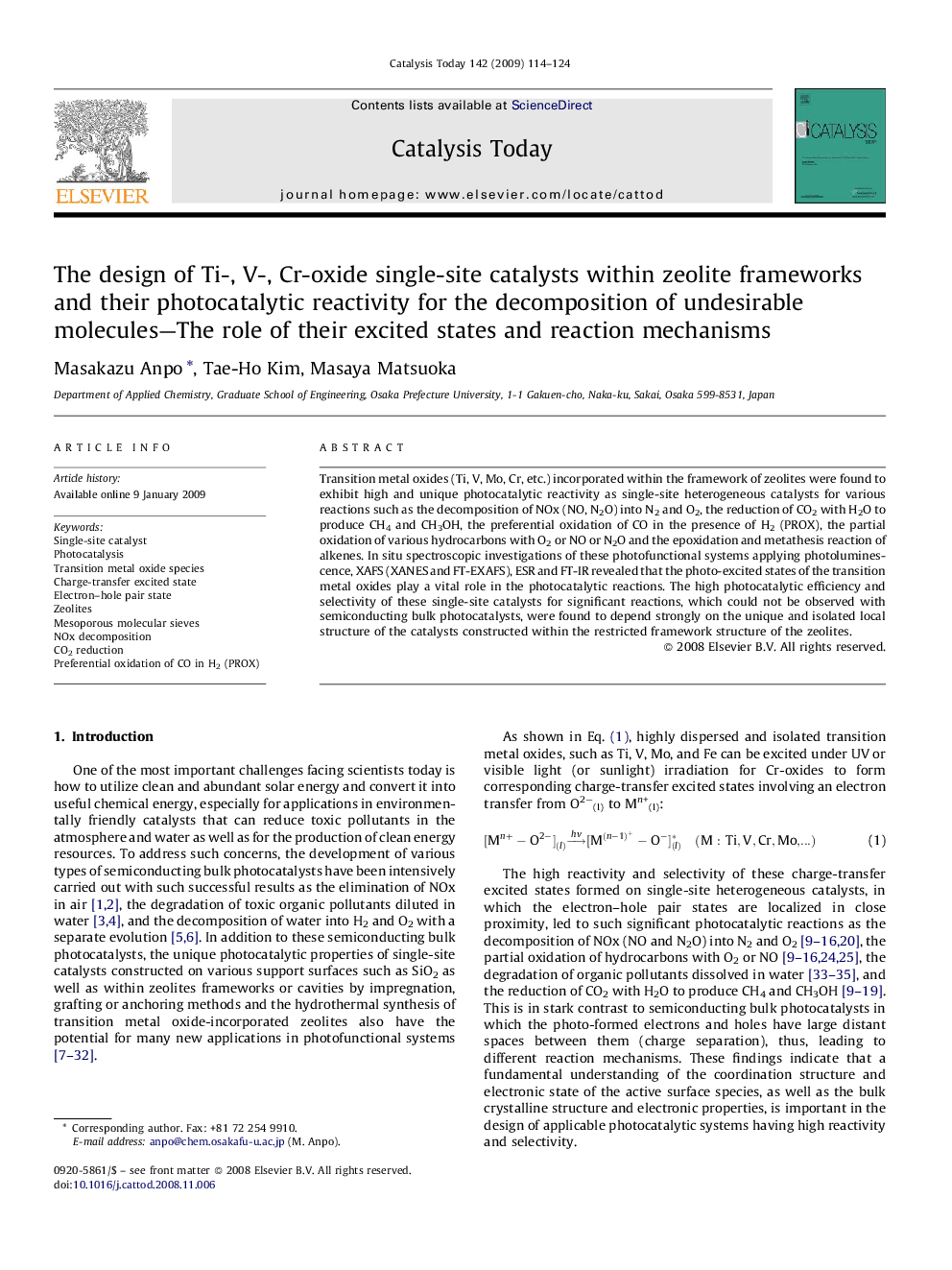| Article ID | Journal | Published Year | Pages | File Type |
|---|---|---|---|---|
| 57425 | Catalysis Today | 2009 | 11 Pages |
Transition metal oxides (Ti, V, Mo, Cr, etc.) incorporated within the framework of zeolites were found to exhibit high and unique photocatalytic reactivity as single-site heterogeneous catalysts for various reactions such as the decomposition of NOx (NO, N2O) into N2 and O2, the reduction of CO2 with H2O to produce CH4 and CH3OH, the preferential oxidation of CO in the presence of H2 (PROX), the partial oxidation of various hydrocarbons with O2 or NO or N2O and the epoxidation and metathesis reaction of alkenes. In situ spectroscopic investigations of these photofunctional systems applying photoluminescence, XAFS (XANES and FT-EXAFS), ESR and FT-IR revealed that the photo-excited states of the transition metal oxides play a vital role in the photocatalytic reactions. The high photocatalytic efficiency and selectivity of these single-site catalysts for significant reactions, which could not be observed with semiconducting bulk photocatalysts, were found to depend strongly on the unique and isolated local structure of the catalysts constructed within the restricted framework structure of the zeolites.
